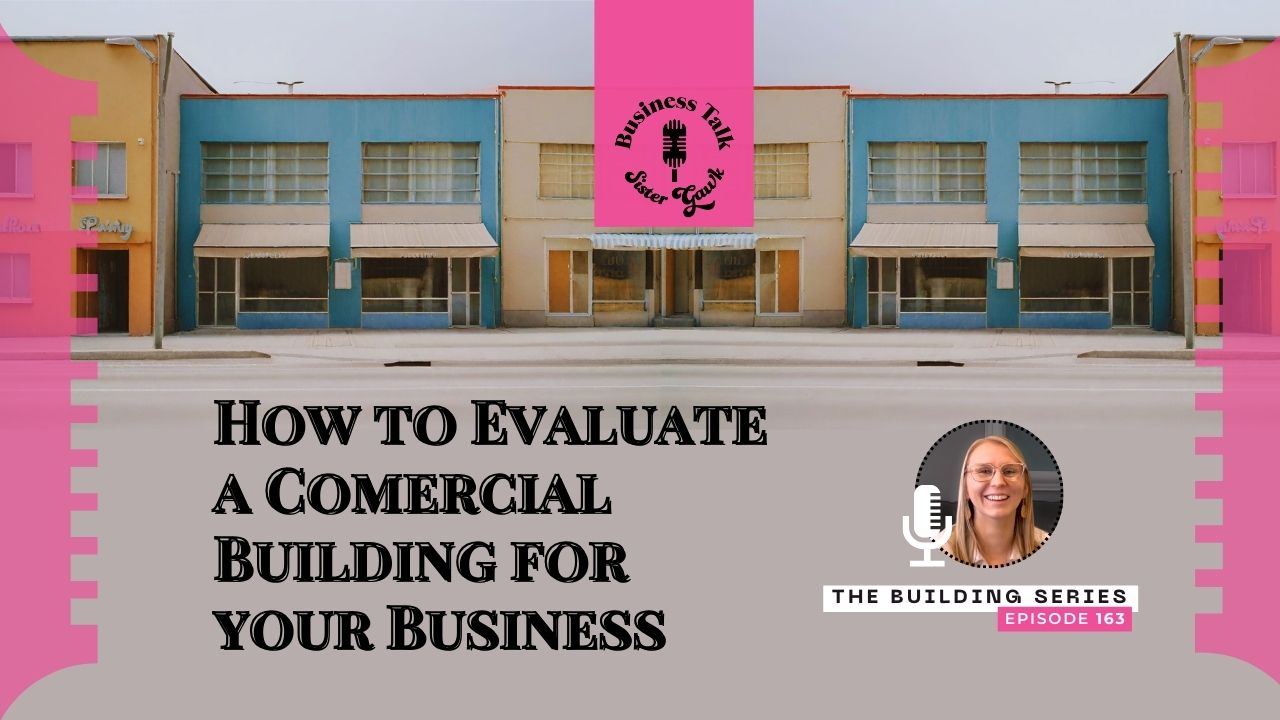Bekkah covers why it’s important to be patient in looking for a property, evaluating if you can grow in the space, if it has enough parking and easy accessibility, considering a property on the national historic registry, and more! Listen now!
A Comprehensive Guide to Evaluating Commercial Buildings for Your Business
Welcome to Business Talk, Sister Gawk! In today’s episode, we’ll delve into the crucial process of evaluating a commercial building for your business needs. This marks the final installment in our building series, covering essential tips and insights garnered from experience and expert advice.
1. Exercise Patience and Due Diligence
Before diving into any commercial property investment, exercise patience and thorough due diligence. Rushing through the process can lead to regrettable decisions and unforeseen challenges down the road. Don’t succumb to pressure from sellers or agents; take your time to ensure the property aligns with your business goals and requirements.
Consider personal anecdotes where patience proved invaluable in decision-making, such as avoiding unsuitable properties or potential bidding wars. Remember, passing on an opportunity that doesn’t fully align with your vision is not a loss but a strategic decision.
Check Episode 160: “How to Evaluate Buying a Business that has Buildings and Property” where we discussed business versus the property, if buying both together, with Richard Parker.
2. Conduct Thorough Inspections with Diverse Perspectives
Inspect the property meticulously, preferably with a team of experts representing different fields. This may include construction professionals, structural engineers, and even insurance agents. Their diverse insights can uncover hidden issues and provide a comprehensive understanding of the property’s condition and potential renovation needs.
Additionally, leverage resources like state licensure boards to verify credentials and expertise, ensuring you work with qualified professionals. Engaging with smaller, specialized firms or individuals familiar with commercial properties can offer cost-effective solutions tailored to your needs.
3. Plan and Budget for Renovations
Develop a detailed renovation plan and budget, accounting for essential upgrades and compliance requirements. Collaborate with contractors during property walkthroughs to gain insights into feasibility and potential challenges. Consider involving your insurance agent to assess insurability and anticipate additional costs, such as roof repairs or heating system upgrades.
There are grant funds and reimbursements available for these costs, but the application process is lengthy. Keep in mind that obtaining architectural work alone can take six to eight months before reimbursement, delaying the preservation process. Be sure to factor in these timelines carefully.
Check Episode 161: “How to Navigate Comercial Property Grants as a Business Owner” to find more information about this.
4. Navigate Historical Tax Credits Wisely
Explore the potential benefits and challenges of historical tax credits, particularly for properties in historical districts or listed on the National Historic Registry. Understand the varying regulations and preservation requirements imposed by federal and state agencies. Evaluate the feasibility of utilizing tax credits based on your business’s financial outlook and long-term goals.
5. Assess Growth Potential and Operational Needs
Evaluate the property’s capacity to accommodate future growth and operational requirements. Consider factors like loading docks, parking availability, and accessibility for customers. Anticipate future needs and ensure the property’s layout and amenities align with your business expansion plans.
6. Consider Lease Agreements and Tenant Management
If the property includes multiple storefronts or rental spaces, assess existing lease agreements and tenant tenure. Refer to resources like “Rich Dad Poor Dad’s Guide to Investing” for valuable insights and checklists to evaluate lease terms, renewal options, and tenant stability.
In conclusion, evaluating a commercial building requires careful consideration, thorough inspections, and strategic planning. By adopting a patient and diligent approach, you can make informed decisions that align with your business objectives and ensure long-term success.
Don’t rush the process—take your time, gather insights from diverse perspectives, and plan meticulously to secure a property that propels your business forward.




